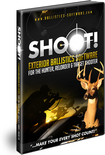TIP 1.
The best thing I believe a firearm manufacturer could do is fit all their factory guns with a decent trigger. A trigger that is reliable, crisp, creep-free and fully adjustable. This is not always the case.
Why bother changing the factory supplied trigger mechanism on most factory guns?
Sure, a shooter can learn to overcome a less than ideal trigger, but there is no reason to. It is also a fact that precision shooting comes as a result of repeatability. That is, being able to shoot with the same hold, grip, trigger pressure, etc, every shot. From my experience a good trigger makes accurate shooting easy.
My Winchester model 70 featherweight in .22/250Rem is fitted with a timney trigger. I like the light, clean and crisp feel with every shot. You must have confidence in the rifle you shoot to be consistently accurate and if this means replacing the trigger mechanism, then the better shooter you’ll be as a result.
A good rifle trigger is important, but not as important as your trigger technique…see tip below…
TIP 2.
Remember that you do not pull the trigger, you squeeze it, regardless of trigger weight (ie, 3lb or 2 ounces). Many beginner shooters make the mistake of pulling the trigger the moment the sights or crosshairs settle on the target. Such a technique does not lead to accurate shooting.
A time proven technique is to gently squeeze the trigger while concentrating on keeping your sights or crosshairs in the vital zone of a game animal or the bullseye of a target.
Once you begin squeezing the trigger, do not stop. The shot should come as a surprise. This trigger technique leads to consistent, accurate shooting, shot after shot.
TIP 3.
So what is the ideal trigger weight for a hunting rifle? Around 2.2 pounds (approx 1kg). Rifles setup for competitive shooting and long range varminting have triggers that break at only a few ounces.
However, I believe that a crisp let off trigger, as opposed to a draggy one with lots of overtravel, is far more important than trigger weight.
Take your gun to a gunsmith and have him/her work on the trigger so it breaks cleanly at the desired weight of pull, then practice, practice, practice at your local gun range until your trigger technique is perfect!
